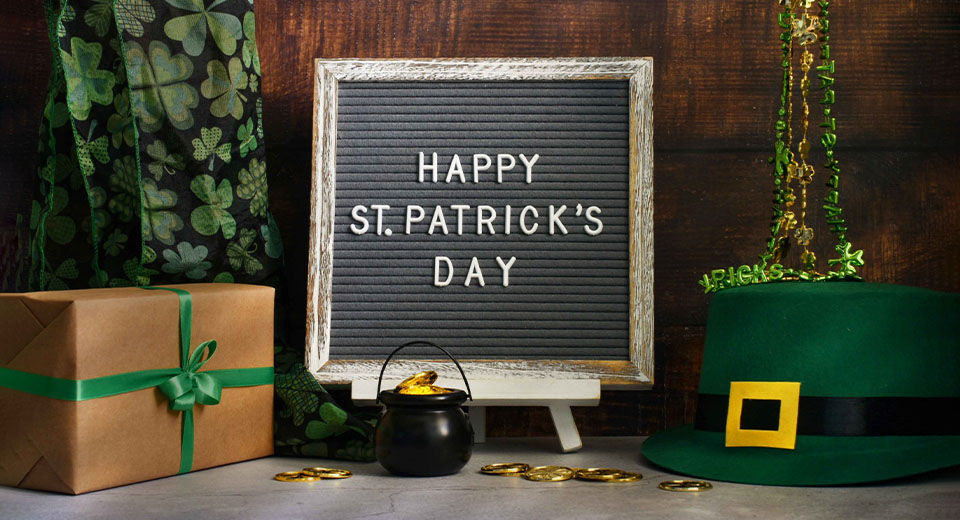Who is St. Patrick?

Contrary to popular belief, St. Patrick wasn't Irish. His original name was Maewyn Succat, and was actually born in Britain around 385 AD. At the age of sixteen, he was kidnapped by Irish raiders and enslaved for six years. During his captivity, he found solace in religion and then eventually escaped.
After returning to Britain, he became a Christian priest and, after gaining religious knowledge, returned to Ireland as a missionary. Saint Patrick played a significant role in spreading Christianity throughout Ireland and is credited with converting thousands of people.
The Shamrock Symbolism

Legend has it that St. Patrick used the shamrock leaf, a three-leaved clover, to explain the concept of the Holy Trinity—the Father, Son, and Holy Spirit—to the Irish people. Thus, the shamrock became a symbol of St. Patrick and Ireland.
However, the association between St. Patrick and the shamrock wasn't widely documented until centuries after his death. On this day, people put this shamrock at the bottom of their alcohol glass. After finishing the drink, they either swallow the leaf or toss it over the shoulder for good luck.
St. Patrick’s Color, Blue or Green?

While green has become synonymous with St. Patrick's Day, its original color was blue. The use of green likely began because of the stems from Ireland's lush green landscape and the association with the shamrock.
Additionally, green has deep roots in Irish history and culture, making it a fitting choice for the holiday. However, blue was the original color for this day before the 18th century, when shamrock became the symbol.
St. Patrick’s Day Parade

The famous St. Patrick’s Day parade is celebrated in many places around the world. The first parade took place in Boston in 1737, followed by New York City in 1762. Irish soldiers who serve the British army march on the streets to celebrate their heritage.
Since then, New York City celebrates the largest parade of all time, attracting millions of spectators annually. In honor of this religious parade, Chicago has colored its river green since 1962.
Lenten Break

St. Patrick's Day falls during the Christian season of Lent. During Lent, people fast and abstain from eating leading up to Easter. However, Lent's restrictions are often lifted on this day, allowing people to indulge in feasting and merry-making.
On this day, people enjoy meat, drinks, and parties before starting their Lent fast again. They serve traditional food and green drinks, making the celebration exciting and fun.
Global Celebrations

While St. Patrick's Day is a national holiday in Ireland, it is celebrated with equal enthusiasm in countries with large Irish populations, including the United States, Canada, Australia, and the United Kingdom, with massive feast fests, theme-colored clothes and masks.
Different countries have their unique ways of celebrating this day. In Chicago, the river is dyed green, while in Japan, celebrations include parades and Irish dancing. In Montserrat, a Caribbean island with Irish heritage, St. Patrick's Day is a national holiday with a week-long festival.
Traditions and Customs

People worldwide follow many different traditions and customs. Beyond wearing green and attending parades, the day is marked by various ways of celebrating with religious services, meals, drinks, and parties. Even though it was initially strictly a dry day before the 1970s, after which people started drinking on this day.
In Ireland, it's common to attend church services, enjoy traditional Irish meals like corned beef and cabbage, and partake in music and dance. In the United States, activities range from pub crawls to Irish-themed parties and concerts.
The Iconic St. Patrick’s Day Symbol
There are many symbols associated with this day apart from the shamrock, including leprechauns, pots of gold, and the Celtic harp. These symbols are deeply rooted in Irish folklore and mythology.
For many Irish people, St. Patrick's Day is not just a day of celebration but also a time to reflect on their heritage and identity. The holiday serves as a reminder of Ireland's rich history, culture, and the enduring legacy of St. Patrick.
St. Patrick’s Day and Irish Identity

St. Patrick is one of Ireland's most revered saints and is closely associated with the identity of Ireland. He is contemplated as the patron saint of Ireland, and his legacy continues to be celebrated and revered by people of Irish descent worldwide.
“Saint Patrick removed all the snakes out of Ireland” became a metaphor people used for the struggle against British rule. The Bank Holiday Act was finally passed in 1903 as a national holiday in Ireland.
When is St. Patrick’s Day 2024?
St. Patrick's Day is always celebrated on March 17th, as it marks the death anniversary of St. Patrick. In 2024, this holiday will fall on a Sunday, so many people will have an extra day off work to celebrate.
St. Patrick's day is much more than just a day to wear green and indulge in festivities. It's a celebration of Irish culture, history, and the enduring legacy of St. Patrick. By delving deeper into the origins and lesser-known facts about this holiday, we gain a greater appreciation for its significance and the impact it has had on people around the world. So, as you don your green attire and raise a glass to St. Patrick's, take a moment to reflect on the rich tapestry of history that lies behind this beloved holiday. Cheers to St. Patrick's Day – Sláinte!



.jpg?updatedAt=1735197007532)

/The_Ultimate_Guide_to_Cleaning_Couch_Cushions_the_Right_Way.jpg?updatedAt=1728383746466)




.jpg?updatedAt=1735200955338)